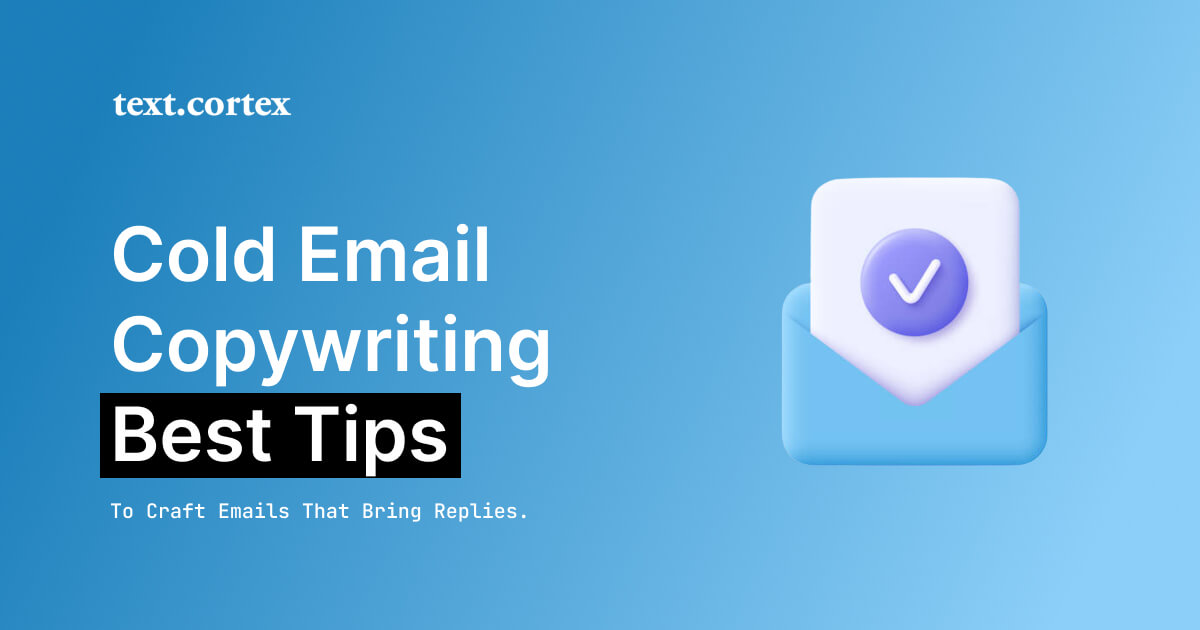Did you know that there are 293 million emails sent every day?
Meaning that you need a stellar email copy if you are going to stand out in your recipients' inboxes.
And how can you expect someone to read and reply to your emails if your emails aren't compelling enough?
Writing cold emails isn't exactly the most enjoyable task in the world, but it's also necessary if you're serious about your prospects.
Still, many marketers fail to make them effective.
But no worries, we got you covered.
In this post, we'll share our top 12 cold email copywriting tips that will help you create effective cold emails that bring tons of replies.
So if you’re ready, let’s begin!
Why is cold email copywriting important?
Cold emails are a great way to reach out to new prospects with a personal touch and make them feel more comfortable with being contacted by a stranger.
But most importantly, they can bring loads of new customers and clients to your business if done properly.
So using the power of cold email copywriting can help your business grow rapidly.
There's no magic formula to writing great cold emails. It takes practice, persistence, and the willingness to get rejected.
But there are some basic principles you can follow to help you improve your email replies.
Let’s get into these email copywriting tips to see how you can use it to your benefit.
1. Start with a hook
If you want to succeed at cold email, you need to start with a hook.
A hook is what catches the reader's attention and compels them to read on. It can be done in a variety of ways:
- Start with a question.
- Include an intriguing fact or statistic.
- Ask for help or information from the recipient.
- Be funny (or at least try).
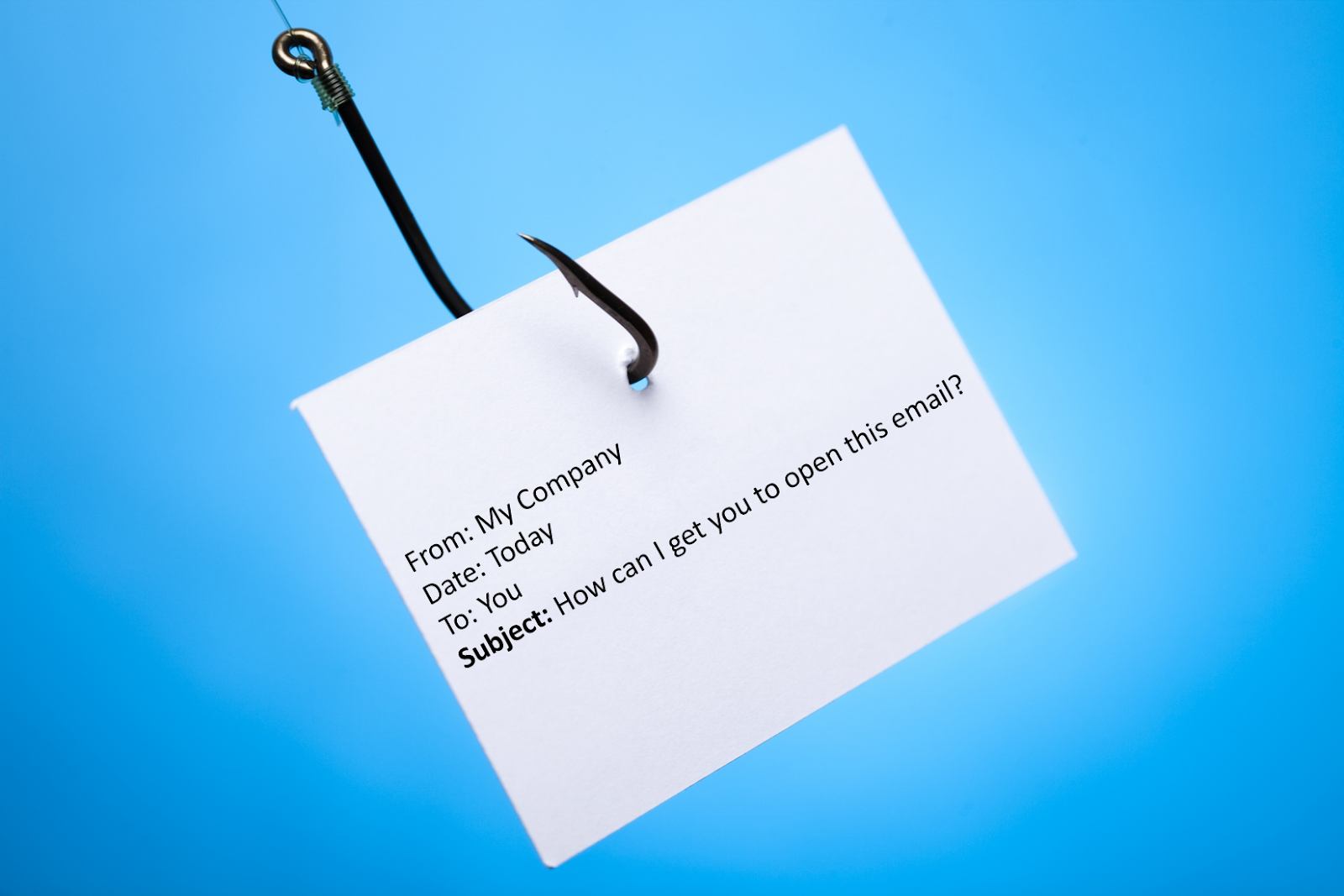
Here are some examples of hooks you can use:
- "I think you'll love this article."
- "Your company is mentioned in this article."
- "I want to share this article with you because it mentions your company."
- "You might be interested in this article because of X, Y, and Z."
2. Make your email concise
Cold email copywriting is tricky because you don't have the benefit of knowing a lot about the person who will receive your message.
You want to get your point across without wasting the recipient's time while still leaving them wanting more.
To make that happen when crafting a great cold email, make sure it’s short and sweet.
No one will read your emails if they are too wordy or complicated.
A good rule of thumb is to keep your emails between two or three paragraphs long, depending on how much information you have to share.
Here’s an example:
"Hi {{FirstName}},
We are an innovative startup looking for someone like you to help us launch our new product. We’re offering all users $50 in free cryptocurrency when they sign up (details below). Would love to learn more about how your business is doing and if you think we might be able to help each other out?"
If you have a lot of information to share, break it up into several emails instead of cramming it all into one long email.
On the other hand, if someone needs more information about what's being offered or how it works, you can always provide additional links.
Pro tip: If you’re struggling with placing important information into one email, you can use AI email writing tools to help you with this process, such as TextCortex Chrome Extension.
All you need to do is write three bullets about your topic, highlight it, and click “Bullet point to email,” and your email is created on the fly.
What’s relaxing is that you don’t need to enter any app.
But instead, you can use it directly in any textbox you need, such as Gmail.
3. Write in the second person
If you're wondering how to write a cold email that gets replies, the answer is simple: Write like you're talking to a friend.
Cold email copywriting is all about connecting with your reader.
It's not about being clever or funny or businesslike — it's about creating a real connection between two people who don't know each other.
When you write in the second person (using "you" in your sentences), readers feel like they're being talked to directly.
It's like having a conversation with someone in real life.
It makes them feel like you know them and their problems, and that you really get what they need from your product or service.
Here are some tips for writing in second person:
- Don't use any first-person pronouns (I, me, my).
Don't refer to yourself at all! If you do need to say something about yourself (like "I'm a freelance writer"), put it at the end of the sentence so that it doesn't interrupt the flow of your message.
- Use contractions ("don't," "can't") whenever possible — these make your copy sound more conversational and friendly than formal language does.
4. Use genuine curiosity as motivation
The biggest mistake that people make with cold emails is writing them like they're applying for a job.
They're not, they're asking for a meeting or an introduction.
You need to have genuine curiosity as motivation. What's in it for me? Why should I do this?
Use these tips to craft high-impact cold emails that bring replies:
1. Use the recipient's name
2. Be personal, but not overly so
3. Be brief and clear about what you want
4. Ask for what you want at the end
The best way to get someone's attention is to appeal to their curiosity.
For example: "What's the best way for me to promote my blog posts?" or "How do I get more sales from my Facebook ads?"
When you ask a question like this, people are more likely to read your email because it shows you're interested in what they have to say.
If they reply with an answer, then great!
You have a new connection and can continue building your relationship with them.
5. Focus on the benefits
If you're familiar with the art of cold emailing, you know that it's all about selling your product or service to someone you don't know.
But how do you do that when you're pinging someone out of the blue? It takes some finesse.
The best way to begin crafting a cold email is by focusing on the benefits of your product or service.
Don't waste time talking about what it is or why it's important; get right to the point by highlighting its benefits.
If you sell an app that helps people save money, highlight how much money users can save using your app.
If you have an online course on how to grow a business, include specific details about how much money students could make with their new skillsets.
When you're making a list of benefits, try to keep them concise and highlighted in bold text so they stand out from the rest of the copy and catch the reader's eye immediately.
Here's an example:
Hi [Name],
I'm emailing you because I love [Product X]. You might have seen my tweet about it from last week. I think it's very useful for my work, and I'd like to see if it would be helpful for you too.
Product X is an online course that teaches people how to do [X]. It's great for anyone who wants to learn more about [X]. If you're interested, there's a free trial available here: [URL]
If you have any questions or would like a demo, let me know!
6. Write like a human
A cold email is an introduction to someone new.
You're asking them to take time out of their day to read an email from a stranger.
And if they take the time, they'll be rewarded with valuable information, insight, or advice.
So, once you've started your email on the right foot, continue with a few paragraphs about yourself or your business.
These are called the "meat of your message" and will help you build some relationship with the recipient before getting to the point.
They should include some personal details about yourself, but make sure they're relevant to your target audience (i.e., don't mention that you love watching baseball if you're emailing someone who lives in New York City).
The point is to make yourself seem like a real person, not just another robot spamming people with offers they don't want.
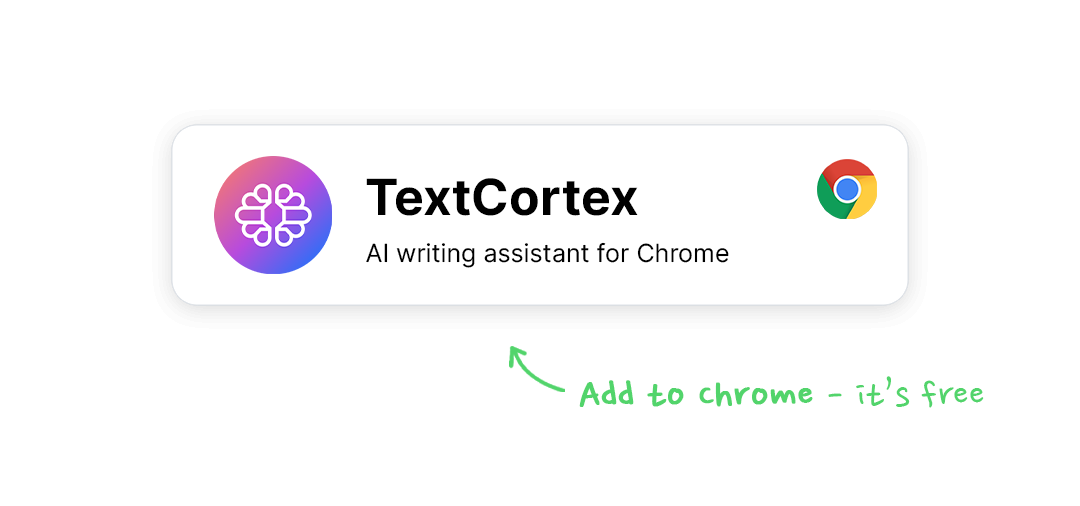
7. Include a compelling offer
Offer something specific and actionable to the recipient.
For example, if you’re in marketing, offer them a free trial or discount on your product or service.
If you’re a freelancer, offer them a free consultation on their business challenges.
If you’re running an eCommerce store on Shopify, offer discounts on products or services based on how much money they spend.
The key is to give them something of value in exchange for their time reading your email and engaging with it further.
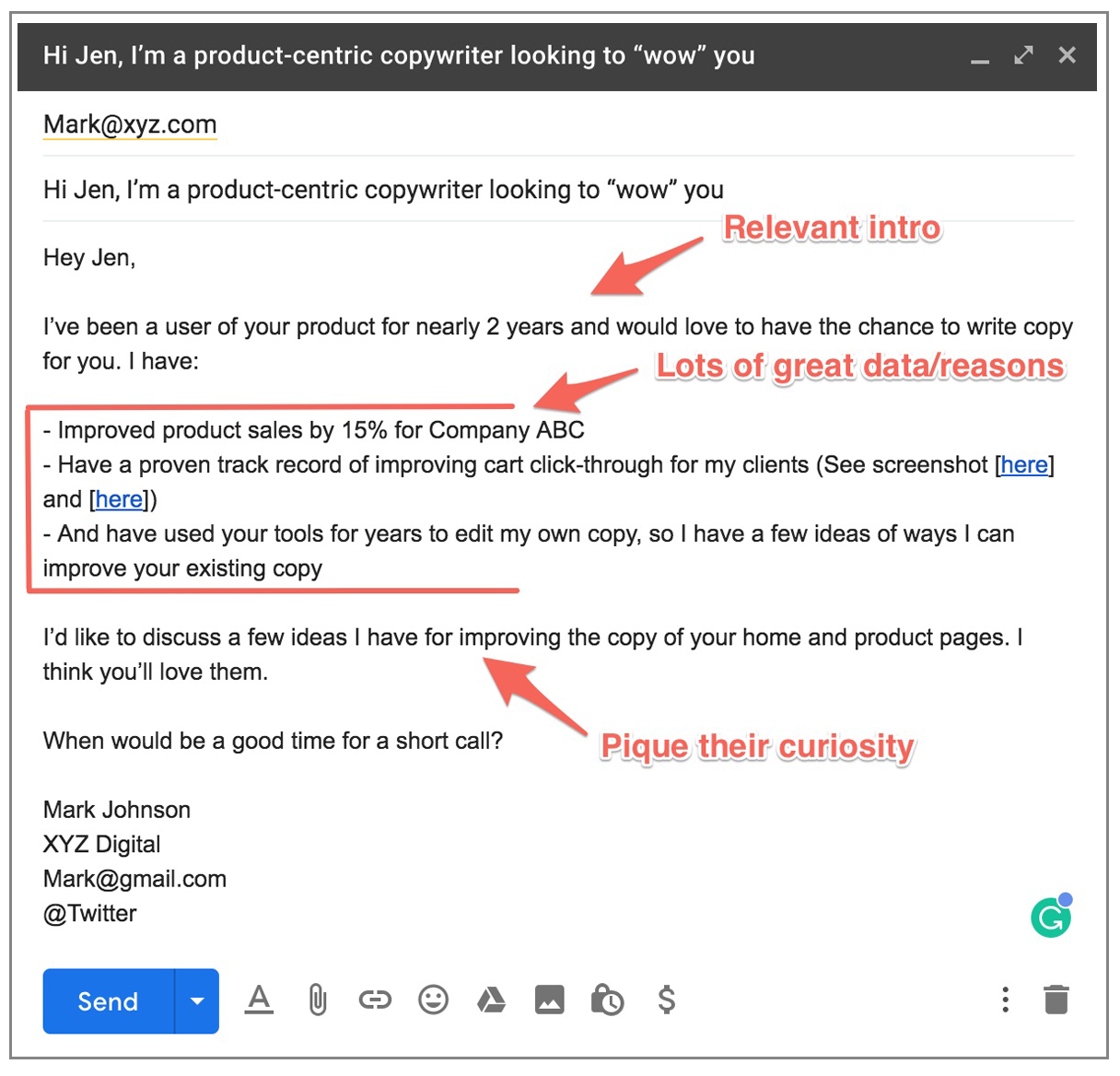
8. Use Social proof
This is one of the most persuasive cold email copywriting techniques I've ever seen: "I saw that you were tagged in this photo on Instagram."
Or "I noticed that you were mentioned on Twitter," etc.
Social proof shows that other people think highly of you and like being associated with you — which makes people want to respond!
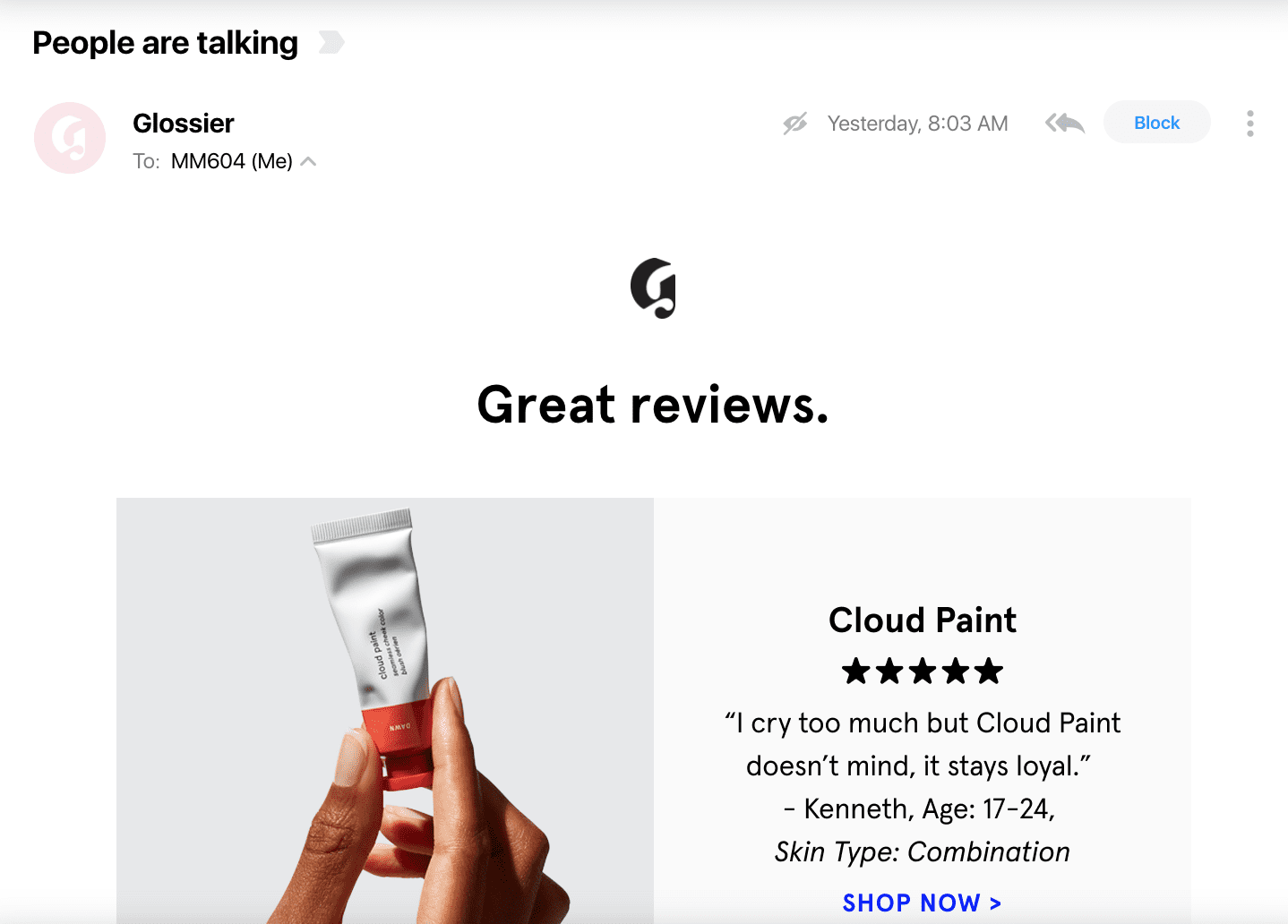
9. Use FOMO (Fear of Missing Out)
What Is FOMO?
FOMO stands for “Fear Of Missing Out” and refers to a psychological phenomenon where people feel anxiety over not doing something because they fear they will miss an opportunity.
It’s a powerful emotion that can be used in your favor when crafting cold emails that get responses.
Here are some ways that you can use it in your own emails:
- Include a sense of urgency: You don't want to seem like you're rushing the person into replying, but you also need to convey a sense that time is limited. The best way to do this is with numbers.
For example, if your offer is only available for a limited time, mention that fact in your copy.
- Talk about how much they'll lose out on if they don't take action quickly: If there's something they want or need, tell them how much they'll miss out on if they don't act now.
This is where FOMO really shines because humans naturally fear loss more than gain — so showing them what they stand to lose will make them more likely to act quickly.
If you want people to respond quickly, tell them why it's important for them to do so right now. A good example would be: "This offer ends tonight at midnight." Or: "We're offering this discount until midnight tonight only."
10. Use the P.S. As a last-ditch effort to get them to read
If you've crafted an email with great subject lines and compelling copy, but still haven't gotten any replies, try adding a short P.S. at the end of your message: "PS - If you want more information about X, click here."
This will give readers an incentive to click through in order to find out more about what they're interested in receiving from you (and hopefully open up the door for future marketing opportunities).
The P.S. (which stands for postscript) is the last thing you write in an email.
It’s where you can give your pitch or ask a question or make a statement that will make people read the email.
The P.S. is an opportunity to get your reader to engage with your email and take action on it.
It’s the place where you can try to get them to move from reading your email to doing something with it — whether that’s clicking on a link, filling out a form, or replying with their own thoughts.
Here are four tips for using the P.S.:
1) Use it as an afterthought
2) Ask for feedback
3) Offer something in return for their time (like discounts or gifts)
4) Keep it short
11. Make the CTA clear
Here are some tips to make sure that your cold email copywriting is as effective as possible:
1. Write an email that clearly describes what you want.
Don’t waste time with small talk or irrelevant details.
Be clear about what you need from your prospect and why they should respond to your message. If you’re not sure how to start, try writing down a list of questions or concerns that your prospect might have about what you offer. You can then address these issues directly in your email copywriting.
2. Make sure that your CTA is clear and easy to see at first glance.
If it isn’t, then you will lose many prospects who won’t bother reading any further than this section of the email before deleting it from their inboxes (or worse yet – deleting it without even opening it!).
12. Test, test, test.
It's important that you're constantly testing with emails.
If you send out a campaign and it doesn't work, try something different the next time.
You might find that an email with a subject line that's too long will get fewer opens and replies than one with a short subject line.
Or maybe all of your leads are on mobile devices, so you need to make sure you're sending them links in an easy-to-click format (such as bitly).
No matter what you do, make sure it's something that fits into your larger overall strategy.
It's not enough to have a good sales funnel; once you have people interested in your product or service, it's time to set up a system where they can easily buy from you again and again over time.
Conclusion
The best way to succeed with email marketing is to use it strategically.
That means that instead of just randomly sending out emails whenever you have something to promote, you should follow a plan that makes sure every message gets attention.
We hope these cold email copywriting tips will help you realize what you should focus on to improve your outreach results.
To make this process easier for you, we created TextCortex.
TextCortex is a use-case-based AI writing assistant that can save 80% of your time spent on writing emails.
On the other hand, it brings you back loads of money you typically lose by writing non-effective emails.
How does it work?
TextCortex use-case modules train their AI writers with 3 billion sentences to write on various topics, formats, and features.
This includes creating cold and follow-up emails, backlink and partnership email offers, or any kind of email you need.
And with TextCortex Chrome Extension you can easily create your cold emails without the need to leave your box.
And guess what?
You can test it out for FREE.
If you're ready to put your emails on fire, download the TextCortex extension and see how it skyrockets your email replies instantly. 🚀
.jpg)
